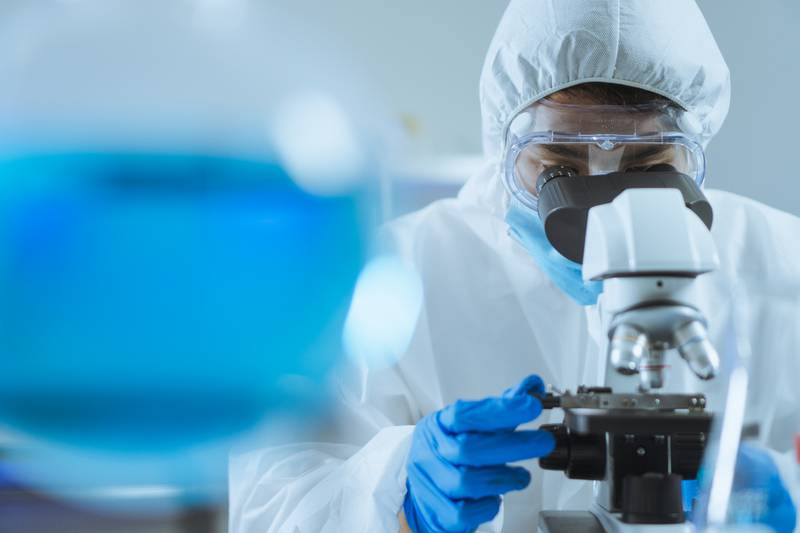- Researchers added Omicron’s spike protein to the original Wuhan Covid strain
- Omicron’s spike is highly mutated which made it the most infectious variant ever
- Omicron is also far less deadly, causing mild disease in most affected animals
- Study intended to discover if spike protein determines deadliness of infection
- 8 in 10 mice infected with the lab-created strain died at Boston University lab
- This compares with a 100% fatality rate in mice infected with the Wuhan strain
Scientists from Boston University were heavily criticized today after it was revealed that they had created a new, deadly strain of Covid in their laboratory.
It was reported that the team had created a virus hybrid by mixing Omicron and the original Wuhan strain. In a study, this new virus killed 80% of mice it came into contact with.
Even in the United States, where one would assume safety procedures are taken very seriously, virus manipulation research is still ongoing. This newfound knowledge suggests how dangerous these practices could be after it was recently revealed that similar techniques may have started the pandemic.
“This should be totally forbidden, it’s playing with fire,” said Professor Shmuel Shapira, a leading scientist in the Israeli Government.
Scientists believe that Covid-19 may have originated from gain of function research, which is when viruses are intentionally made more infectious or deadly.
The first cluster of cases was located just miles from a Chinese laboratory that carried out similar research on bat coronaviruses. However, the practice has been significantly limited in America since 2017.
Dr Richard Ebright, a chemist at Rutgers University in New Brunswick said, ‘The research is an example of gain of function research.’
He stated: ‘If we are to avoid a next lab-generated pandemic, it is imperative that oversight of enhanced potential pandemic pathogen research be strengthened.’
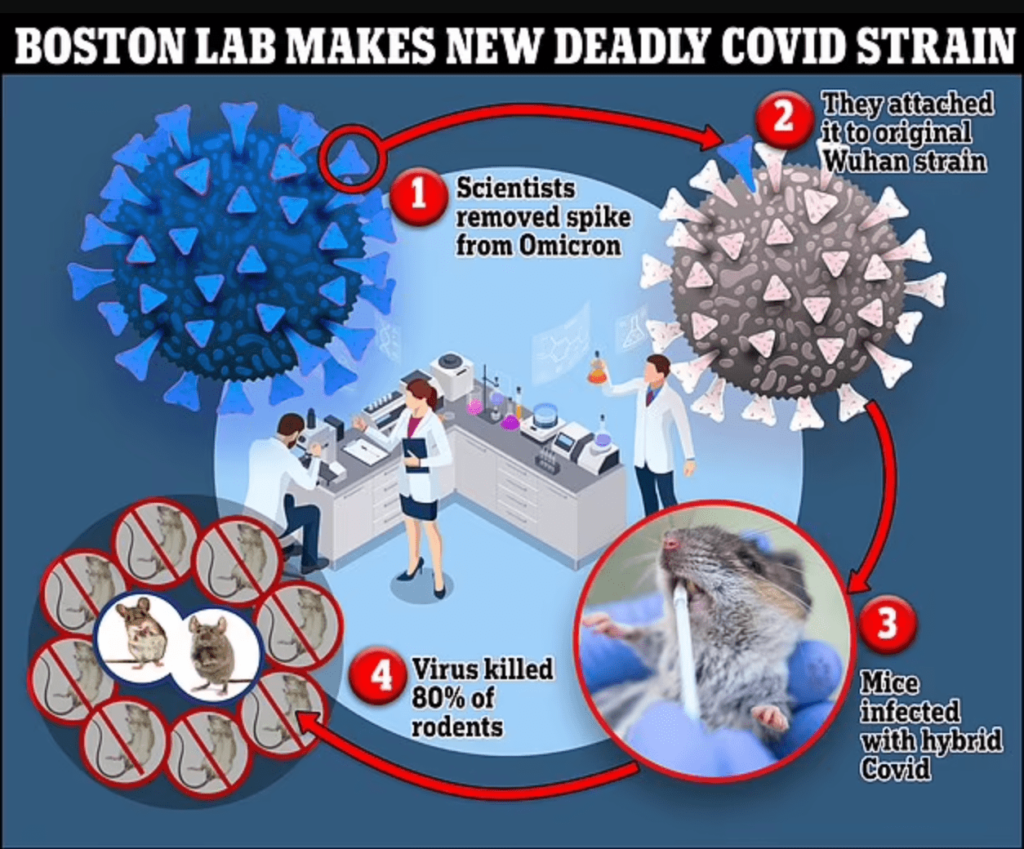
The new research, which is awaiting peer-review, focused on Omicron’s spike protein. The team of researchers from Boston and Florida discovered that the shape of this structure has become more complex overtime. This change has allowed for dozens of mutations in its spike protein— making it more infectious to human cells. The researchers attached Omicron’s spike protein to the original wildtype strain that first emerged in Wuhan at the start of pandemic and observed how mice responded to this new hybrid strain as compared to the original Omicron variant.
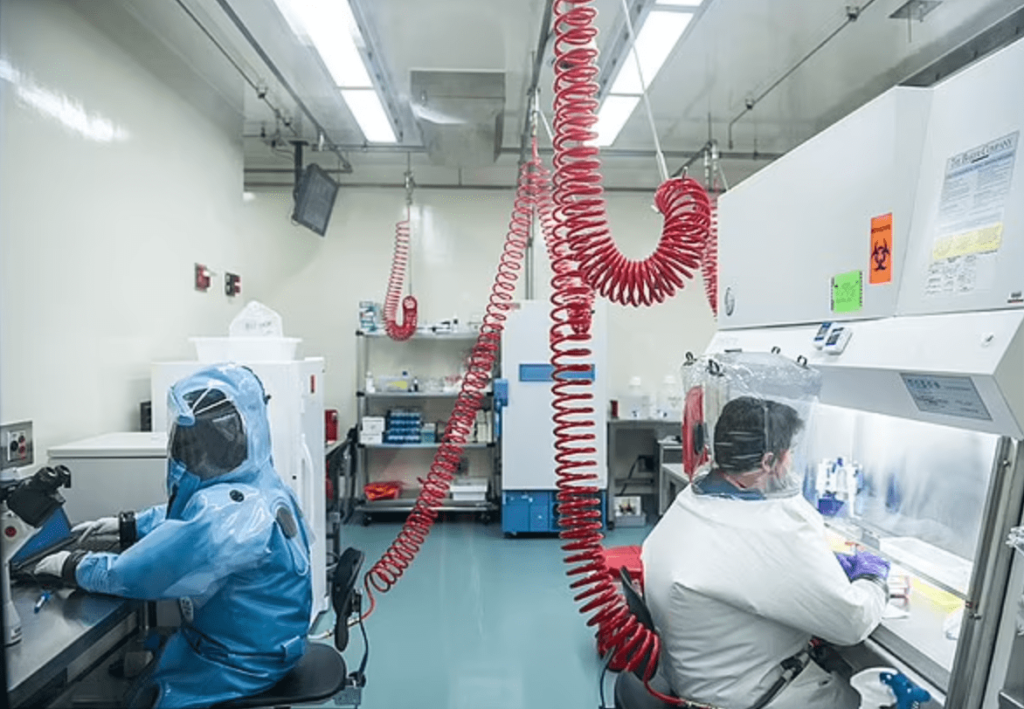
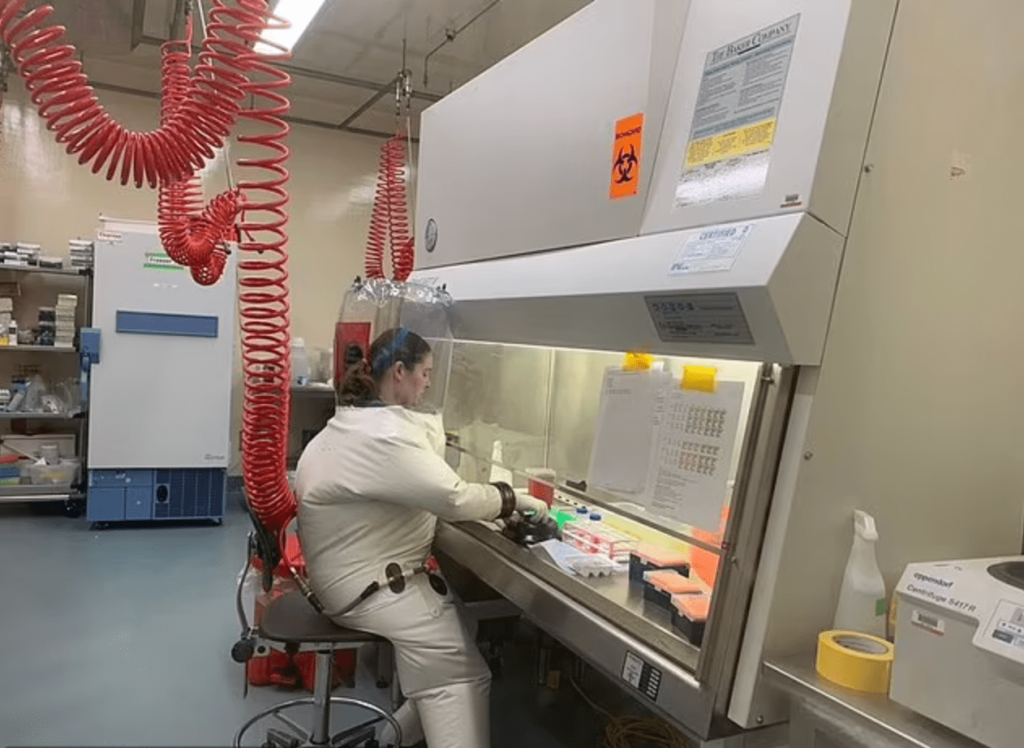
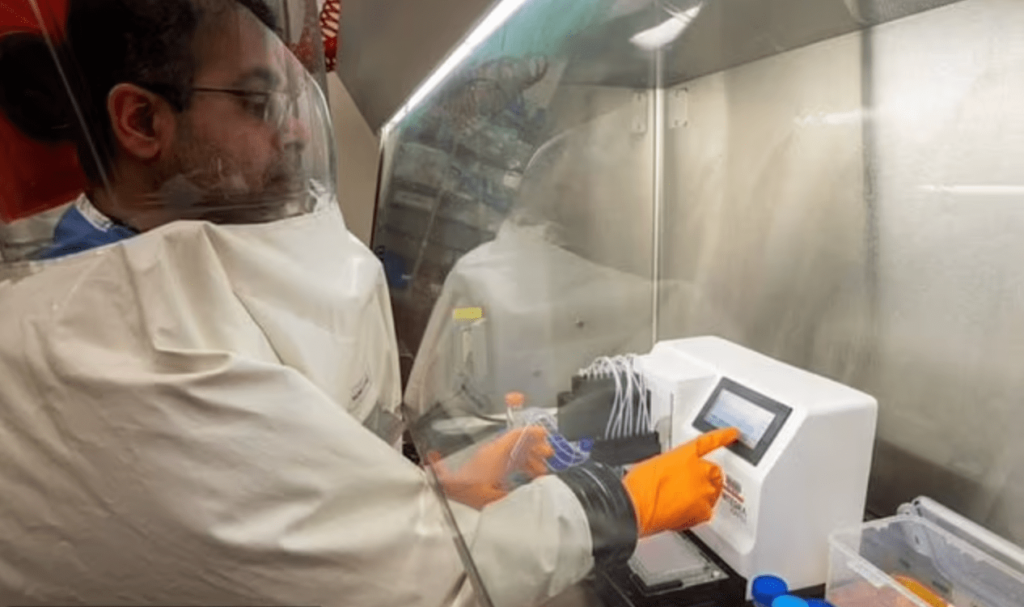
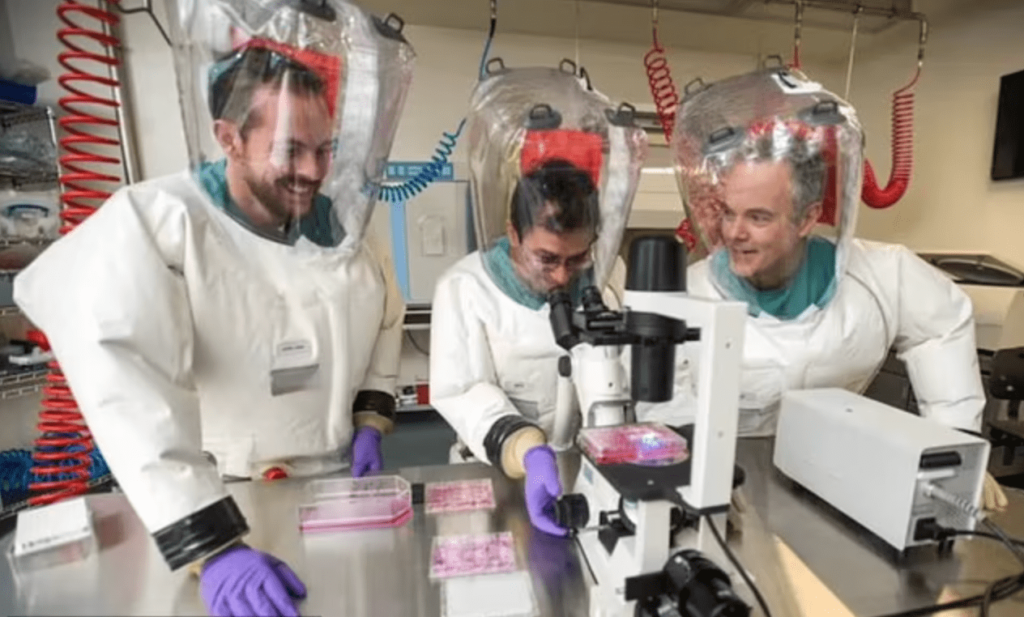
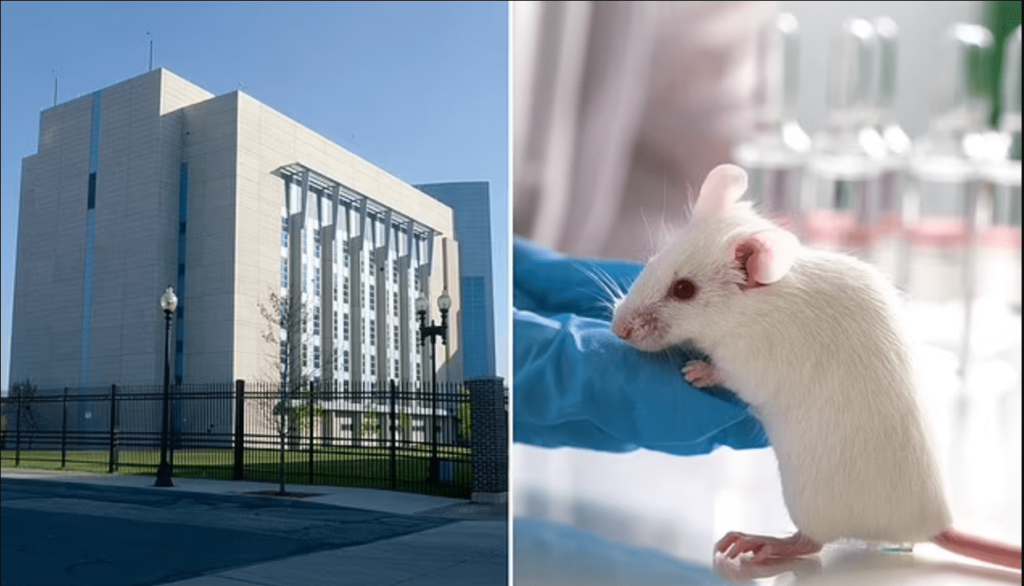

The Omicron virus has always had the potential to mutate, and over time it has become more dangerous. Dozens of mutations on its spike protein have made it highly infectious.
To study the origins of the outbreak, researchers attached Omicron’s spike to the original wildtype strain that emerged in Wuhan.
The researchers compared how well mice fared against the new hybrid strain of Omicron, in comparison to the original variant.
In contrast, when a identical group of rodents were exposed to the Omicron strain, they all survived and only had ‘mild’ symptoms.
The paper’s authors wrote that the Omicron-carrying virus caused severe disease in mice with a mortality rate of 80 percent, while the same virus without the Omicron protein only caused mild, non-fatal infection.
The researchers said that while the spike protein is responsible for infectivity, changes to other parts of its structure determine deadliness.
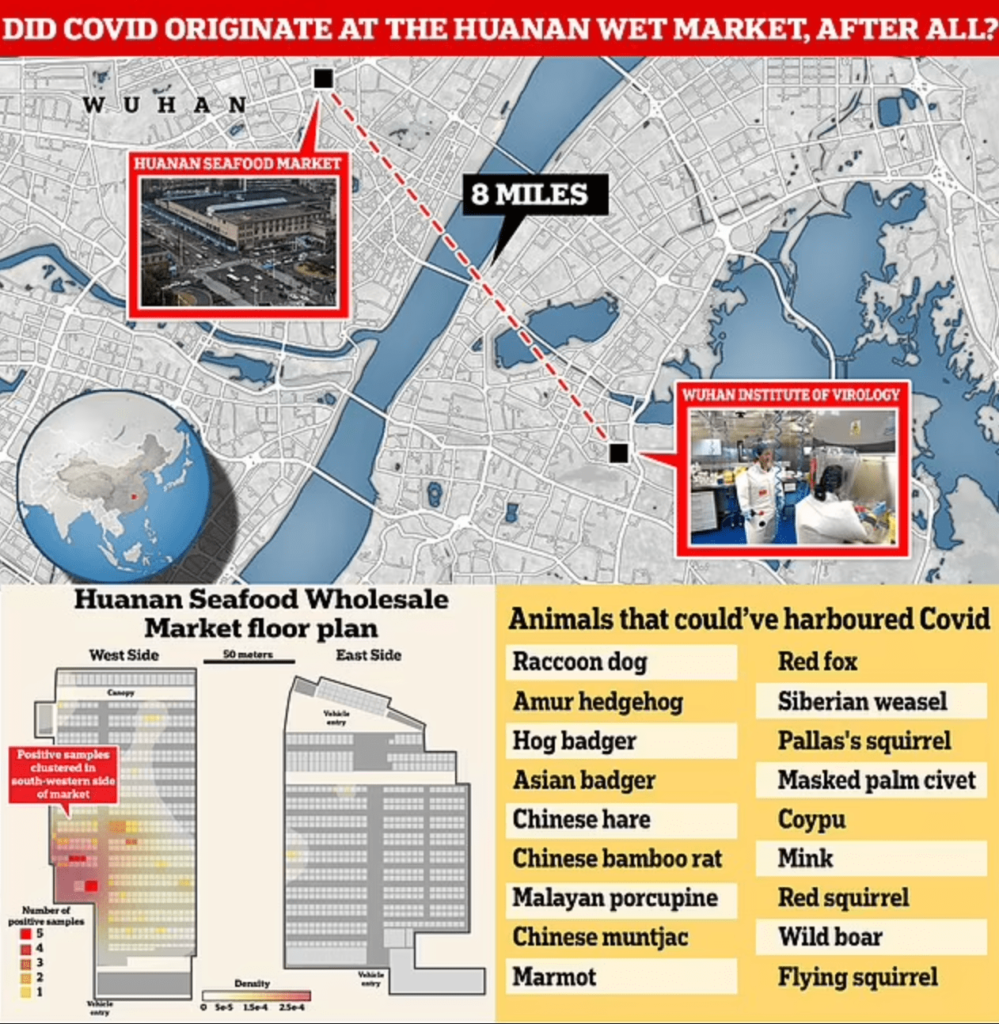
The fierce debate over how to prevent the next pandemic was sparked by the question of whether the global outbreak began with a spillover from wildlife sold at Wuhan’s market or leaked out of the lab just eight miles across the Yangtze River. New studies have found viruses on the floors, cages and counters of the Huanan wildlife market. These positive swab samples also indicate that the virus came from stalls in the southwestern corner of the market (bottom left), where animals with chances to carry Covid were being sold for meat or fur at that time (bottom right).
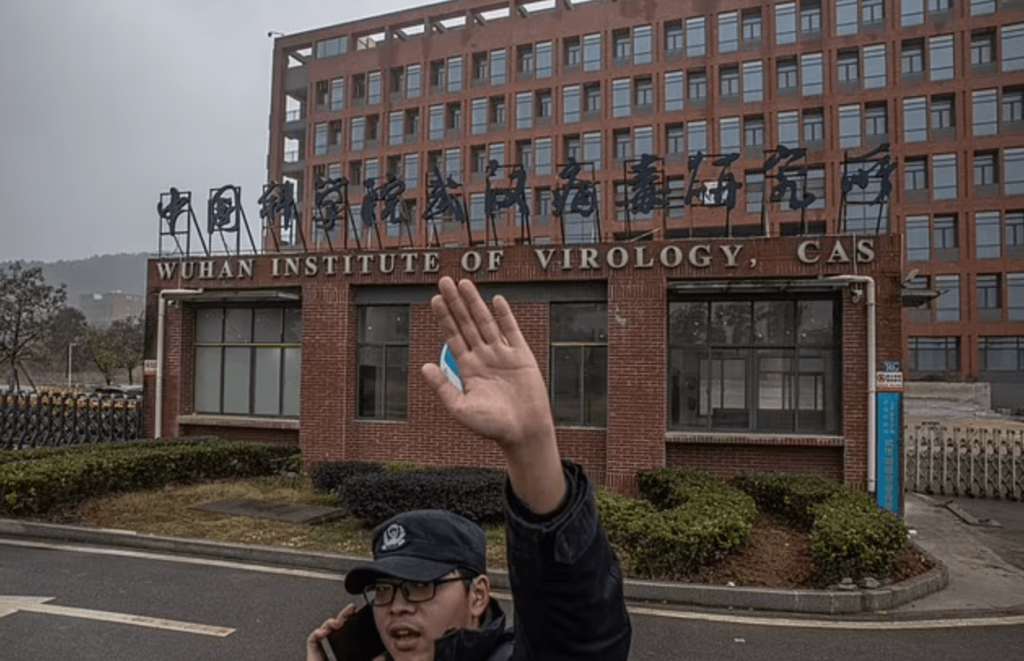
Dr Ebright said ‘The research is a clear example of gain of function research of concern and enhanced potential pandemic pathogen (ePPP) research.
‘It is especially concerning that this new US-government ePPP research – like the previous US-government ePPP research on chimeric SARS-related coronaviruses at Wuhan Institute of Virology that may have caused the pandemic – appears not to have undergone the prior risk-benefit review mandated under US-government policies.’
‘If we are to avoid a next lab-generated pandemic, it is imperative that oversight of ePPP research be strengthened.’
‘It is imperative that the existing polices mandating prior risk-benefit assessment of ePPP research be followed, and it is imperative that officials at US-government agencies who repeatedly have placed the public at risk by repeatedly violating the existing policies be held accountable.’
Prof David Livermore, a professor of microbiology at the UK’s University of East Anglia said, ‘given the strong likelihood that the Covid pandemic originated from the escape of a lab-manipulated coronavirus in Wuhan, these experiments seem profoundly unwise.’
Why are 40 new biochemical labs being built to handle dangerous viruses when we have yet to learn our lesson?
Amidst fears that the outbreak of Coronavirus may have originated from risky lab experiments, there has been a worldwide increase in laboratories that deal with deadly viruses.
Over 40 new biosafety level 3 (BSL-3) or BSL-4 certified facilities have been built or started construction in 2020, mostly located in Asia.
In the wake of Covid, many countries are scrambling to get ahead of the next outbreak by studying pathogens that could potentially harm humans.
Scientists working at these laboratories are constantly running experiments that aim to improve treatments and vaccines for animal viruses, in case of a future outbreak.
However, many people are worried that these types of experiments might cause pandemics– some experts say this is what happened with Covid-19.
The virus is believed to have originated from a wet market in Wuhan, eight miles away from the high security biolab- Wuhan Institute of Virology. This institute worked with dangerous bat coronaviruses and other creations. The scientists there not only worked on some of Covid’s closest relatives, but they were also found to have deleted crucial databases and prevented independent investigations into the laboratory’s potential ties to the pandemic.
Professor Paul Hunter, an expert in infection diseases from the University of East Anglia in England, said he was worried about what other purposes the new labs would be utilized for.
‘The issue is what you’re going to be using [the labs] for,’ he told this website. ‘If they’re for diagnostic purposes, then you need them. But I don’t think every country needs a BSL-4.’
He added: ‘If they start having a dual purpose for research that has offensive military implications, that is the concern.’
In total, Russia is proposing 15 maximum security labs, India is aiming for 18 BSL-3 and BSL-4 labs, and the US already has 12 highest level biosecurity laboratories with plans to add one more.
Until 2017, gain of function research- which is largely credited to the National Institutes of Health- was not allowed to take place in the US. The project was stopped from 2014 to 2017 because there were fears that it could accidentally cause a pandemic.
The purpose of the research is to learn how to make viruses more deadly or infectious in order to be prepared for future epidemics.
The University of Boston denied that the experiments were for gain of function, claiming that the research was only to be reviewed and approved by the Institutional Biosafety Committee (IBC) and not by the Boston Public Health Commission.
A spokesperson said that this research lines up with the findings of other similar research done by different organizations.
‘Ultimately, this research will provide a public benefit by leading to better, targeted therapeutic interventions to help fight against future pandemics.’
Although the official story is that Covid was transmitted to humans from an animal – possibly a bat – in a Wuhan wet market, some people think otherwise.
The Wuhan Institute of Virology was conducting gain of function research on similar strains before the virus emerged in the city.
There is a theory that the pathogen was developed in the lab by employees, and then it escaped into the world.
Boston scientists, who were performing similar research, looked at how different strains of the virus effect human lung cells grown in a lab. The coronavirus grabs human cells with its spike protein, and makes the cell create more of the virus.
Scientists measured the replication rate of each variant in healthy cells.
The researchers found that the hybrid strain produced five times more viral particles than the original Omicron. However, they concede that the hybrid virus is unlikely to be as deadly in humans as it was in mice.
The reason for this is that the particular breed of lab mouse used is highly susceptible to developing a severe case of Covid. Additionally, mice and humans have completely different immune responses to the virus.
The lab, located at Boston University’s National Emerging Infectious Diseases Laboratories, is one of only 13 biosafety level 4 labs in America.
These are the labs equipped to deal with the most deadly pathogens. Additionally, there are facilities in Texas, Atlanta and Manhattan, Kansas.
At these labs, biologists often experiment with different animal viruses in order to find cures and advance treatments for future outbreaks.
Research concerning the live virus that causes Covid can only be conducted in a BSL-3 or BSL-4 lab.
In these types of labs, all experiments must take place inside a ‘biosafety cabinet’ — an enclosed area with ventilation specifically for dealing with pathogens. The labs also have doors that close themselves, sealed windows, floors and walls, and ventilation systems with filters.
In a BSL-4 lab, full-body, air-supplied pressure suits are worn and workers must change their clothingbefore entering. They also have to shower before they leave the building. The laboratory is located in a different area of the structure and has an isolated ventilation system. For years, people have debated about the original source of the 2020 global pandemic.
It is officially believed that the virus was transmitted from a bat or similar animal to a human in Wuhan, before spreading among people. Some believe that the virus may have been created by man – with theories spanning from accidental to purposefully malicious. The ‘lab leak’ Covid theory posits that the virus was developed through gain of function research at the WIV.
It is feared that the virus being developed managed to infect an employee and then escape into the real world from there. In the early days of the pandemic, many people wrote off the Covid theory as a conspiracy and instead believed that it was a naturally occurring event. But the he hypothesis quickly gained traction after a series of discoveries and cover-ups.
Critical data about the first infected people was erased from the Wuhan lab’s system in late 2019, and one of its employees disappeared after falling ill with a strange flu-like sickness.
After two studies were published tracing the origins of Covid back to Wuhan’s animal slaughter market, the debate about the pandemic’s start was reignited.
For the first time, one study demonstrates how human cases in winter 2019 were closelypacked within a small geographical area near the Huanan Seafood Market.
More precise analysis of swabs taken from floors, cages and counters reveal that the virus originated in stalls in the southwestern corner of the market, where animals that can harbor Covid were sold for meat or fur at the time.
A second study was executed in order to determine the date of the first animal-to-human infection–which occurred on November 18, 2019. This conclusion was derived from carrying out genetic analysis on hundreds of samples from the first human carriers. If the evidence they have discovered is legitimate, another first generation strain of virus was spreading among the wet market–putting both original lineages within its walls.
Until recently, the only Covid cases linked to the market were of Lineage B. It was thought that this lineage had evolved after Lineage A.
Those in favor of the accidental lab leak hypothesis argue that this is evidence the virus only arrived after it had already evolved in another part of Wuhan.

